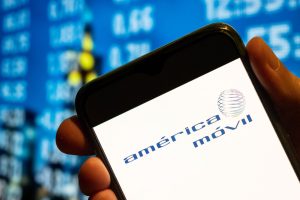We have gotten used to our phones being huge. The small mobile has practically disappeared from the map, and although there are some options, manufacturers almost no longer bet on compact formats although there are some options. Now there is a project that wants to rescue the compact Android mobile, and it comes from a group that has already amazed the world in the past.
Pebble. In 2013, an amazing project appeared on Kickstarter: a smart watch that looked almost like a toy and that revolutionized the entire industry. That little device had its particular rise and fall, and was responsible for the beginning of the era of smartwatches. In fact, the Apple Watch and watches based on Wear OS ended up taking over that baton and consolidating this technological category.
Looking to bring back the small mobile. Eric Migicovsky was the leader of the Pebble project, and it is he, together with a group of former employees, who now wants to bring us back a small-format mobile. they tell it on the vergewhere they have been able to speak with this team of entrepreneurs whose goal is to create a compact smartphone.
all to do. At the moment the project is in an embryonic phase. It all came from an idea that Migicovsky shared last year and that has been validated by almost 40,000 people. This has made this entrepreneur get down to work and propose a roadmap with his team for the potential design, development, manufacture and sale of this new compact smartphone.

The camera module will be the hallmark of this terminal… if it ever appears on the market. Source: Small Android Phone Project
distinctive cameras. Those responsible for the project are clear that this mobile must have good cameras that take good photos — “it will not be a 100 Mpixel sensor,” they say — but they will also use the camera module so that the mobile is clearly identifiable. They have contacted Chinese developers who have worked on applications capable of taking RAW photos, and it seems that they will create their own software in this regard to try to get good results.
Marvin. That is the code name of that phone of which neither the design nor the materials are still clear. They do state that “we want to stand out with our attention to detail, not by using rare materials.” The final name of the device is yet to be decided, but they have candidates like Pico, Pip, Atom, and, of course, Pebble.
High end, but not super high end. This mobile, yes, will not be cheap: although everything is yet to be defined and the price will be derived from those decisions, it is expected that the figure will be around 700 dollars and will not exceed 850. So, it will probably be more expensive than other mobiles with superior hardware, but it is normal considering that only a few tens of thousands of mobiles will be produced from the hypothetical first model, and not millions as is the case with the large manufacturers.
It all depends on the screen size. The feature that determines everything is the screen. Almost no one offers screens smaller than 6 inches anymore, so there is talk of a custom screen that, yes, would add “substantial cost” to the phone and could delay its appearance. Other sections depend on this diagonal, such as the battery or the situation and design of the motherboard and its components, for example.

Decent hardware, but not super powerful. In this mobile they hope to have the Snapdragon 8+ Gen 1 or perhaps a mid-range processor yet to be announced. What they are clear about is that they are not going to raise revolutions in the architecture and components of the mobile, thus resorting to components that are already available to facilitate this design and development, at least in that section. So, it is to be expected that if it appears, it will do so with specifications that will be decent but not groundbreaking.
Crowdfunding. To get it all off the ground, they hope to create a crowdfunding campaign — not on Kickstarter, which would keep a sensible amount of the proceeds. To finance the project they need between 40 and 50 million dollars, and that makes the goal very difficult to achieve: those almost 40,000 interested parties could fall short.
Essential and Nextbit already tried. Competing with the greats of mobility is very complicated, and small projects that have had a very limited scope despite generating expectations know it. It happened with Essential or Nextbit. The latest project in this sense, yes, seems to continue to be well received: Nothing is in that battle and in fact has just presented the second generation of in-ear headphones.
An inspiring project but with many obstacles. in Xataka We are many those of us who have a special love for compact mobiles, so projects like this are certainly encouraging and could offer a promising alternative in this regard. The objective, yes, is plagued with obstacles, and above all a crucial one: the large mobiles have already won the game. The question is whether small mobiles can end up surviving as a small niche market.
Image: small android phone
In Xataka | Our TVs and smartphones have not stopped growing in the last 20 years. It’s hard for them to do much more















